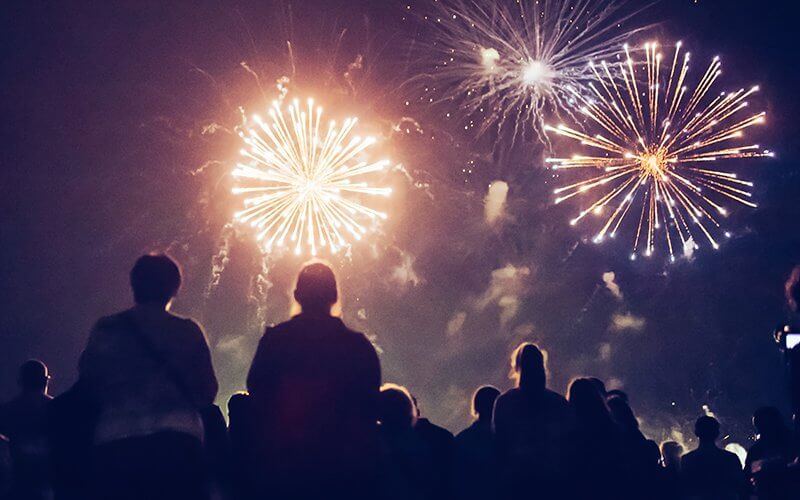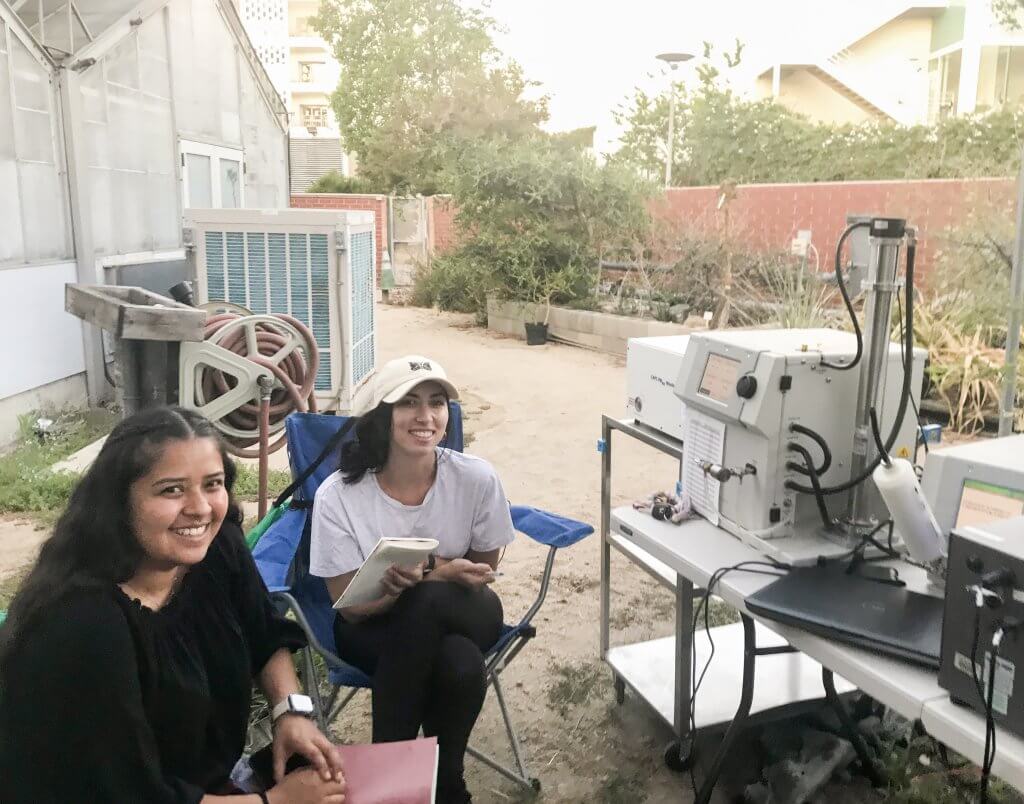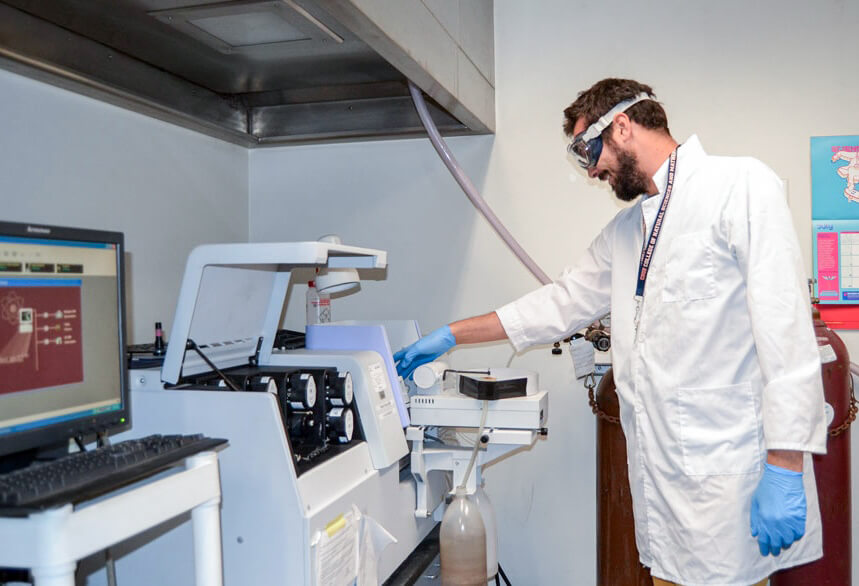
During this summer’s Independence Day celebration, Cal State Fullerton chemistry researchers will collect particle samples from dazzling fireworks displays in the nighttime sky to determine adverse health impacts.
To collect data, air sensors will be placed on top of campus buildings, including Dan Black Hall and the College of Humanities and Social Sciences.
“July Fourth is one of the worst days of the year for air quality in the greater Los Angeles area because a lot of smoke particles are generated and the pollutants build up in the atmosphere rapidly,” said Daniel B. Curtis, associate professor of chemistry and biochemistry.
A published study by Curtis and his chemistry students found that fireworks emit a high concentration of potentially toxic chemical particles into the atmosphere in Orange County and the region on and around Independence Day.

Their study, “The Impact of Fireworks on Selected Ambient Particulate Metal Concentrations Associated With the Independence Day Holiday,” was published in Atmosphere. The peer-reviewed, open-access scientific journal covers research related to the Earth’s atmosphere.
According to the study, human exposure to high ambient aerosol particle concentrations, both long-term and short-term, from fireworks, firecrackers and sparklers increases the risk of potential health effects to people.
“Fireworks are often used in celebrations and are a known transient source of extreme particulate air pollution — and the particles produced by fireworks are known to contain potentially harmful heavy metals,” said Curtis, who studies how aerosol particles affect climate change.
The investigation found high concentrations of barium, chromium, copper, strontium and lead from pyrotechnic displays.

Chemistry alumni Danielle Rocco ’23, Esther Morales ’23, Tyler Deflin ’25 — all earned master’s degrees — and Jason Truong ’22, who earned a bachelor’s degree, are co-authors on the publication with Curtis.
Curtis and his student researchers collected smoke particles outdoors from fireworks in Fullerton, including from the Biological Science Greenhouse Complex on campus, during the 2020 and 2021 Fourth of July holidays.
The researchers analyzed the data in the lab to determine what chemicals people may be exposed to during and after public fireworks displays and from private residences.
“Overall, the chemical concentrations we measured were among the highest ever reported globally during firework events,” Curtis said.
Curtis said their study revealed that the region’s pollution was worse in 2020 than in 2021, likely due to a higher personal use of fireworks during the COVID-19 pandemic restrictions.
This academic year, chemistry students, including Deflin, continued to work on the research with data from 2023 and 2024. An Orange County native, he was interested in the project because the air quality in Southern California is among the worst in the U.S.

Deflin, who earned a bachelor’s degree in philosophy from CSUF in 2014, returned to the university to study analytical chemistry. The May grad built upon the work of previous student researchers, with the study’s latest preliminary findings showing an even higher concentration of metals than in 2020 and 2021.
“On top of contributing to overall poor air quality, the tiny size of these particles can be inhaled in the mouth and nasal cavity as well as into the lungs, which can contribute to respiratory diseases,” said Deflin, a chemist in food science research and development.
“These particles can also be absorbed through lung tissue and enter the bloodstream, depositing harmful metal particles in the cardiovascular system.”
The researchers are finalizing their latest data for a new publication.
Chemistry graduate student Zeinab Khalil, who plans to complete the degree program next year, is continuing work on the fireworks research by analyzing particle samples collected in 2024 and 2025.
“If we can better understand how particles affect people, we can potentially help scientists discover ways to decrease the amount of pollutants in the atmosphere,” she said.